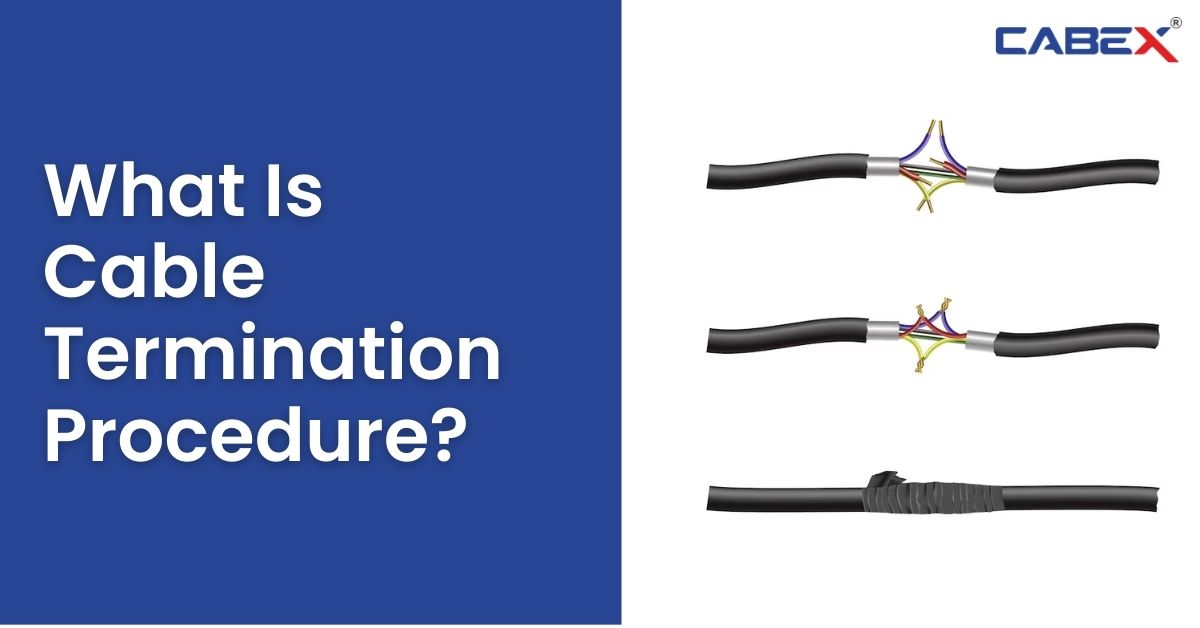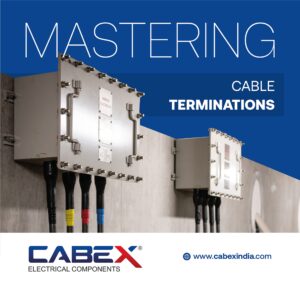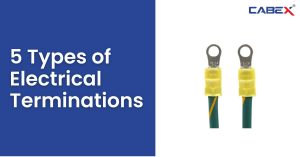Introduction
What Is Cable Termination Procedure? Cable termination is a crucial process in electrical installations that involves connecting cables to various equipment or devices. Whether you are setting up a new electrical system or replacing damaged cables, understanding the cable termination procedure is essential for ensuring safe and efficient operations. In this comprehensive guide, we will delve into the fundamentals of cable termination, its importance, and the steps involved in executing this procedure accurately. Need Expert Cable Gland Solutions?
Ensure safety and durability in hazardous environments with our range of Explosion Proof Cable Glands, Industrial Cable Glands, and comprehensive Explosion Protection solutions.
Explore now:
Explosion Protection Solutions
Understanding Cable Termination | What Is Cable Termination Procedure
Cable termination refers to the process of connecting the end of a cable to a suitable terminal or device. It ensures the secure transmission of electrical power or signals between the cable and the connected equipment. A proper termination not only guarantees optimal performance but also prevents electrical hazards such as short circuits, cable damage, and energy loss.
Importance of Cable Termination
Accurate cable termination plays a crucial role in maintaining the integrity and efficiency of electrical systems. Here are some key reasons why cable termination should be given utmost importance:
Electrical Safety:
A correctly terminated cable prevents the exposure of live wires, reducing the risk of electrical shocks and potential hazards to personnel.
Reliability:
Proper termination ensures stable and uninterrupted power transmission, minimizing downtime and preventing equipment damage caused by faulty connections.
Signal Quality:
In data and communication systems, precise termination minimizes signal degradation, resulting in improved data transfer rates and reduced data loss.
Cable Termination Procedure
Now, let’s delve into the cable termination procedure, which involves the following steps:
Cable Preparation:
Begin by carefully preparing the cable ends for termination. This includes stripping off the cable sheath to expose the conductors and removing any insulation or filler materials.
Connector Selection:
Choose the appropriate connector or terminal for the cable type and application. Factors such as conductor size, voltage rating, and environmental conditions should be considered during this selection process.
Connector Installation:
Follow the manufacturer’s instructions to install the chosen connector or terminal onto the cable end. Ensure that the conductors are properly aligned, and the connector is securely fastened.
Insulation and Sealing:
Apply insulation materials, such as heat shrink tubing or insulation tape, to protect the cable terminations from moisture, dust, and other environmental elements. Use cable glands to provide strain relief and secure the cable within the termination enclosure.
Testing and Verification:
After completing the termination, conduct rigorous testing to verify the integrity and functionality of the cable connection. Use appropriate testing equipment to check for continuity, insulation resistance, and any potential faults.
The Role of Cable Glands in Cable Termination
Cable glands, also known as cable connectors or cable fittings, are essential components in the cable termination process. These devices provide several important functions:
Strain Relief:
Cable glands offer strain relief by securing the cable and preventing excessive tension or bending stress at the termination point. This helps to minimize the risk of cable damage and ensures long-term reliability.
Environmental Protection:
Cable glands provide a barrier against environmental factors such as dust, moisture, and chemicals. They help maintain the integrity of the cable termination, safeguarding against corrosion and insulation degradation.
Cable Management:
Cable glands assist in organizing and managing cables within enclosures or equipment. They ensure neat and orderly routing, preventing cable entanglement and enhancing maintenance accessibility.
Best Practices for Cable Termination
To achieve optimal cable termination results, consider the following best practices:
Use High-Quality Connectors:
Invest in reliable connectors that are suitable for the cable type and application. Low-quality connectors can compromise the termination’s effectiveness and overall system performance.
Follow Manufacturer Guidelines:
Always adhere to the manufacturer’s instructions when selecting and installing connectors, using cable glands, and applying insulation materials. This ensures compatibility and reliability.
Perform Regular Inspections:
Conduct periodic inspections of cable terminations to identify any signs of wear, damage, or loosening. Timely maintenance and repair can prevent potential failures and extend the lifespan of the electrical system.
For more detailed insights and updates on electrical systems, check out my blog Top Industries That Use Cable Glands
Conclusion
What Is Cable Termination Procedure? Understanding the cable termination procedure is essential for anyone involved in electrical installations or maintenance. By following the correct steps, using appropriate connectors, and employing cable glands for strain relief and protection, you can ensure a secure and reliable connection. Prioritizing proper cable termination practices contributes to improved safety, system reliability, and signal integrity. Remember to consistently follow best practices and consult manufacturer guidelines to achieve the best possible results.
You May Also Like: 2025 Procurement checklist: Must have Industrial Electrical Accessories
FAQ:
The four types of cable termination are soldered, crimped, screw-on, and compression.
The two typical methods of cable termination are crimping, which involves compressing a metal sleeve around the cable, and soldering, which uses melted solder to secure the cable’s wires.
Wire termination is used to establish secure electrical connections. Common methods include soldering, crimping, and using connectors like terminals or wire nuts.
To terminate electrical cables, strip the insulation, connect wires to appropriate terminals, crimp or solder connections, insulate with electrical tape or heat shrink tubing, and secure the termination point. Seek professional assistance if needed.
A cable termination box is a device used to connect and terminate cables, providing a secure and organized enclosure for cable terminations and connections.
To terminate copper cable, strip the insulation, insert the exposed wire into a connector or terminal block, and secure it using crimping, soldering, or screwing techniques. Follow manufacturer guidelines for specific termination methods.






